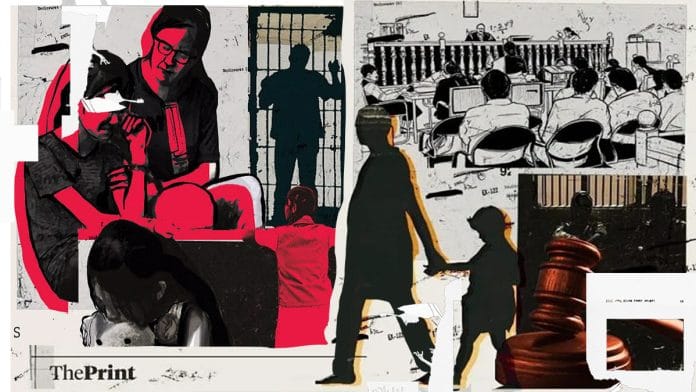Thank you dear subscribers, we are overwhelmed with your response.
Your Turn is a unique section from ThePrint featuring points of view from its subscribers. If you are a subscriber, have a point of view, please send it to us. If not, do subscribe here: https://theprint.in/subscribe/
“But she agreed to it.”
This is the phrase too often used to justify child marriages that appear consensual on the surface. A 16-year-old girl elopes with a boy, says she “loves him,” and suddenly, the legal and moral debate becomes murky. Is it child marriage or young love?
Nothing could be more far from truth or garbed in so much ugliness as this debate. When a 16-year-old elopes with a boy, in most cases, what looks like consent is not love, freedom, or informed choice. It is survival.
Indian law is clear. The age of consent is 18. Any sexual relationship with a minor, regardless of apparent willingness, is classified as rape under the POCSO Act. Yet in village after village, court after court, and family after family, minor girls are blamed or, worse, punished for fleeing with someone they believed could offer them escape.
For many girls, that “yes” is not a celebration of love. It is the only visible exit from abuse, control, poverty, or the threat of being married off to an older man. What looks like a trend, an act of defiance or adolescent recklessness is often a mask worn over fear and hopelessness and a silent cry for help.
As ironic as it sounds, many of these girls, when rescued, are pushed into marriage once again. Sometimes as punishment, sometimes as a supposed remedy, and often because families or communities see no other way out. The result is a vicious cycle where abuse and child marriage continue under new disguises.
Our laws criminalise child marriage. But the intersection of “love” and “minor consent” often creates confusion in the minds of law enforcement, judiciary, and communities. In countless cases, the boy involved is himself barely 18 or 19. He may not be a trafficker or predator. But the girl is still a child and the boy still underage legally for marriage. Her right to grow, study, and choose for herself is stripped away the moment we treat her as if her consent at 16 is equal to that of an adult.
The emotional harm is compounded when authorities refuse to families disown her, panchayats shame her, and shelters may not have space. The result? She stays where she is. Married, vulnerable, and unheard.
To understand the myth of consent, we must understand the contexts in which these choices are made:
- A 15-year-old facing sexual harassment at home or school, with no one to protect her
- A girl threatened with an arranged marriage to a much older man
- A girl whose parents can’t afford her education beyond Class 8 or even 4
- A child who has seen her sister married at 14 and sees no other future for herself
In these situations, a relationship with a boy, even one not built on real love, can seem like the only option. That yes is not an empowered decision. It is a last resort. Meanwhile, in genuine cases of romantic relationships, the state machinery and judiciary should ensure protection with the necessary checks and balances.
There is another side to these stories. Sometimes, “love” is used to disguise trafficking. Men groom underage girls online or in their own communities, gain their trust, elope with them, and then sell or exploit them.
Because of this blurred line, it is essential that every such case is approached through a child protection lens, not as a romance or a moral issue.
Law enforcement must stop treating underage “love marriages” as private matters or harmless relationships. Every minor girl, regardless of whether she appears to have consented, has a legal and moral right to protection, care, and education. In such cases, there must be visible and accessible alternatives like safe shelters, helplines, and trusted support systems. No girl should ever be forced to choose between enduring abuse at home or entering into an unsafe marriage simply because there was nowhere else to go.
Judges, magistrates, and Child Welfare Committees must be trained to recognise that what appears to be consent may actually be the result of coercion, fear, or lack of options. In communities, families must be made to understand that child marriage, whether forced or presented as voluntary, is still a violation of the child’s rights. Legal action must not be held back by tradition. The only long-term solution is to invest in girls’ education, life skills, and opportunities, so that they are never forced into survival decisions disguised as consent.
Over 250 NGO partners of Just Rights for Children network had kick started the ‘Child Marriage free India’ campaign a few years ago. From spreading awareness to using the legal tools such as injunction orders and FIRs, these NGOs are making use of every possible measure to ensure that children are neither married, nor left in the lurch hopeless and with no options ahead. Governments, both at the centre as well in states, have shown remarkable shift in their stance too.
But this shift cannot rest solely on governments or NGOs. It demands a transformation in how we, as a society, understand and talk about consent. We must move beyond drawing-room conversations about our well-protected, amply exposed teenage daughters. The real world begins where our drawing rooms end. And that world is not safe.
These pieces are being published as they have been received – they have not been edited/fact-checked by ThePrint.


